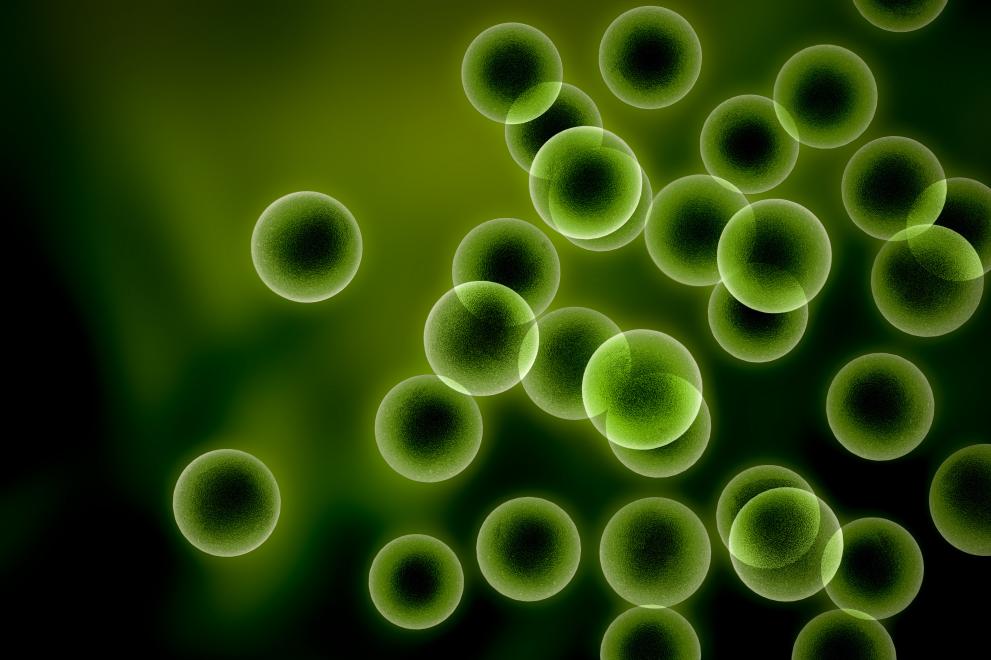
As part of the European Marine Observation and Data Network (EMODnet), EMODnet Human Activities recently published an interview with JRC scientist Rita Araújo, who coordinated the JRC's data collection process for a new dataset on algae production.
This new dataset, which is published on the EMODnet Human Activities website, shows the location of producers of both macroalgae and microalgae, broken down by production method. Rita coordinated the JRC's collection of data directly from producers. In the future, it will be enriched with information on species cultivated and/or wild-harvested.
The importance of algae
The term 'algae' encompasses a highly varied group of organisms (other than embryophyte land plants, fungi and lichens) that have the ability to conduct photosynthesis. They include familiar species such as different types of seaweed and the algal blooms often found in lakes.
Algae are important to the blue bioeconomy both because of their role in the conservation of marine ecosystems and their value for commercial applications that reduce the pressures on land-based products or non-renewable resources or used for their unique properties.
According to the European Commission's Annual Economic Report on EU Blue Economy the EU algae biomass sector currently employs 14 000 people and has a value of EUR 1.69 billion, which includes research and development, equipment production and jobs in the larger supply chain that depend on output from the algae sector.
Several macroalgae species are used as food or as habitat by organisms such as fish or invertebrates (e.g. molluscs, crustaceans). They can also provide bioremediation services because they uptake dissolved nutrients from the water that, if not removed, could cause eutrophication. Because they are photosynthetic organisms, algae also contribute to carbon sequestration, thereby helping to reduce ocean acidification.
While seaweed have been part of the regular diet of billions of people in the world for millennia (particularly in East and South-East Asian countries, which are also massive producers), algae are becoming increasingly popular in Europe. The increased inclusion of algae in western diets could help fill some of the food production needs associated with expected human population growth,
A number of European companies harvest, cultivate, and process algae to create a wide range of high-value products. Algae are incorporated in food supplements and cosmetics because of their unique nutritional composition and claimed antioxidant and anti-ageing properties. Researchers are also exploring the potential of algae in the production of bioplastics and biofuel, which would have huge benefits for the environment.
The sector has excellent growth prospects and can make an invaluable contribution to a cleaner and healthier environment.
Much more microalgae are produced in aquaculture and mariculture than are harvested in the wild. They are currently under research and development for water remediation, production of algal oils (replacing fish oils), production of algal proteins for animal and human feeding, nutritional and pharmaceutical uses, residual proteins and carotenoid anti-oxidants, and high-energy oils for biofuels.
The new dataset on algae production
As Rita explains in her interview, the idea of creating this dataset arose from the JRC's work with the data on algae production within the Biomass Assessment Study (https://ec.europa.eu/knowledge4policy/bioeconomy_en), which sought to estimate the current status and potential trends of the algae sector in Europe.
Given the sparsity and fragmentation of data, the JRC set out to gather and organise the available information into a high quality and reliable format that could be used for good quality analysis by different users with different needs, in a user-friendly website. The dataset on algae production emerged as a result of JRC workshops and discussions with experts from academia, industry and management, in collaboration with EMODnet.
The dataset can be consulted for a global overview of European algae-producing facilities by country, the balance between micro and macroalgae companies, the number of companies producing macroalgae by harvesting or aquaculture (an emerging sector in Europe), the number of pilot projects being carried out, the share of production methods used for microalgae, the countries currently dominating the production sector, etc.
The database will be regularly updated (next update will happen in few weeks) with support from the algae industry sector and feedback from users, and be expanded to include other categories (e.g. Spirulina production) and more detailed information on the algae production. It is hoped that it will become a collaborative and dynamic exercise to increase the knowledge of the sector at the European level.
Further information
Related Content
Details
- Publication date
- 15 November 2018
